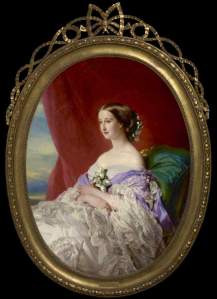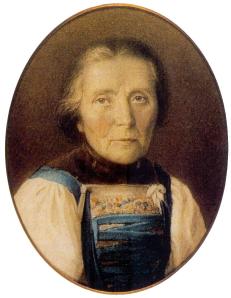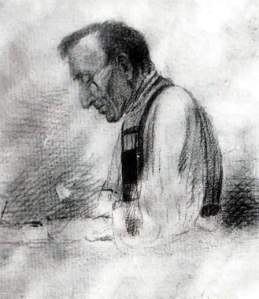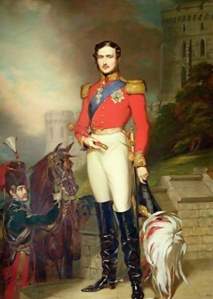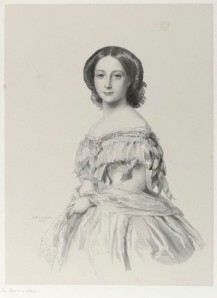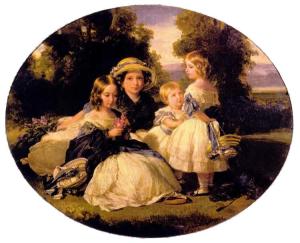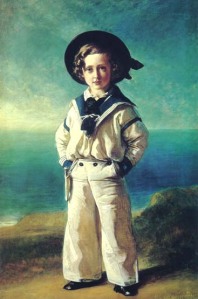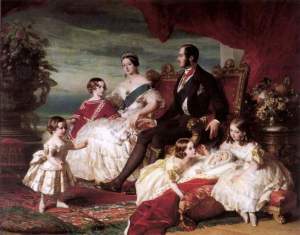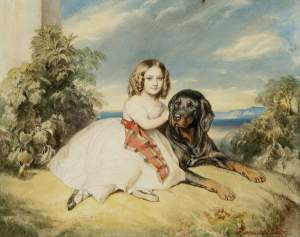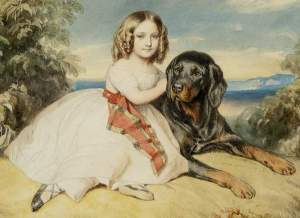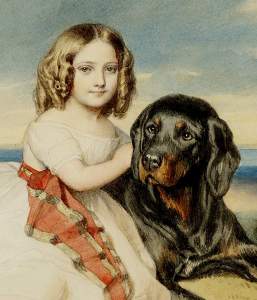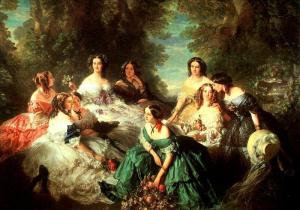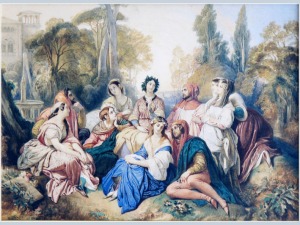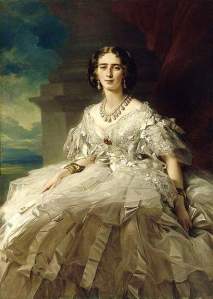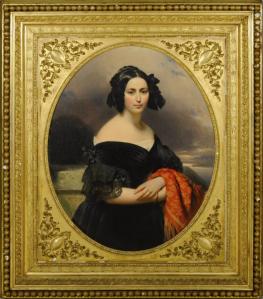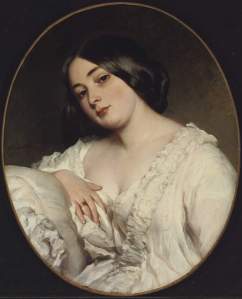Franz Xaver Winterhalter – Empress Eugénie of 1854 (no. 495)
I have recently received a charming email from a curator of the Museum of Fine Arts in Houston, Texas, USA, correcting one of my entries by informing me that no 495, portrait of Empress Eugénie of 1854, is now in the Museum’s collection.
The portrait measures 125 x 95 cm, and it is signed, dated, and inscribed lower centre as painted in Paris in 1854. It is believed to have been commissioned personally by the Empress and paid from her own funds: this fact that was recognised by the French Government in 1881 when it returned the portrait to the Empress in exile together with other paintings and works of art as her private property. The portrait was placed at Eugénie’s home at Farnborough Hill and remained there at least until 1884, when it was gifted to Mme Eugène Rouher (née Marie Cornélie Léontine Conchon (1822-1890)), widow of a prominent Second Empire politician and statesman, and remained in her possession in Paris until her death in 1890. The painting then passed through a number of private collections, and was acquired by the Museum of Fine Arts, Houston, with funds provided by the Agnes Cullen Arnold Endowment Fund, in 2010.
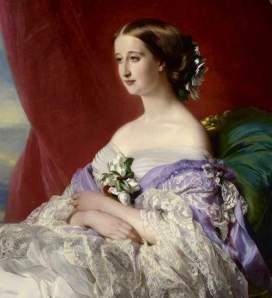 In spite of its importance, the portrait was exhibited publicly only four times. It was lent by the Empress to the Exposition Universelle of 1855, and to the Vienna Kunstverein in 1856. More than 130 year would pass before the portrait reappeared again, this time at the Winterhalter exhibition in London’s National Gallery and the Petit Palais in Paris in 1987-88. In 2009 it was lent to “Napoleon and Eugenie” exhibition at the Nassau County Museum of Art by its then owner, Christopher Forbes.
In spite of its importance, the portrait was exhibited publicly only four times. It was lent by the Empress to the Exposition Universelle of 1855, and to the Vienna Kunstverein in 1856. More than 130 year would pass before the portrait reappeared again, this time at the Winterhalter exhibition in London’s National Gallery and the Petit Palais in Paris in 1987-88. In 2009 it was lent to “Napoleon and Eugenie” exhibition at the Nassau County Museum of Art by its then owner, Christopher Forbes.
The portrait remained well-known through lithographs by Léon Noël (an edition of which was also shown at the Parisian Exposition Universelle of 1855), as well as through a number of copies and miniatures in porcelain and enamel (examples of these abound in public and private collections worldwide). Most recently, of course, it has been popularised as a poster available from countless online retailers.
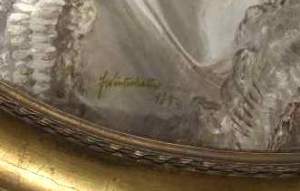 I am sincerely overjoyed that this work of the utmost historical importance, which is also among the key paintings of Winterhalter’s oeuvre, has finally entered a public collection, where it rightfully belongs.
I am sincerely overjoyed that this work of the utmost historical importance, which is also among the key paintings of Winterhalter’s oeuvre, has finally entered a public collection, where it rightfully belongs.
© Eugene Barilo von Reisberg, 2012
